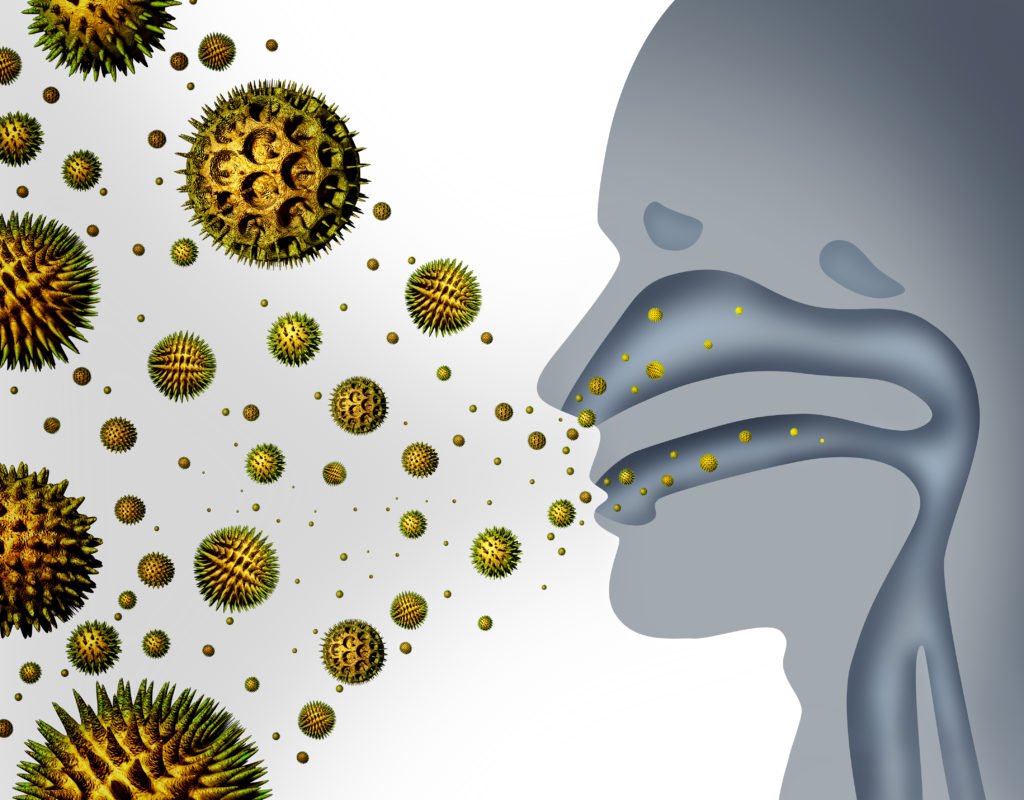Next on our blog series are the thyroid symptoms. We have learnt about the anatomy and development of the thyroid in our first blog, the basics of thyroid physiology and function in our second blog and commonly advised tests for thyroid in our third blog. This blog is about the most searched topic – thyroid symptoms.
We understand by now that the thyroid hormone acts on almost all the body systems by regulating their growth and function. Therefore, it is understandable that its dysfunction will have a myriad of symptoms. It is easier to understand and remember the thyroid symptoms if we break them down systematically.
Organ systems affected by thyroid disorders and their associated symptoms are listed below:
1. Metabolism
A decrease or increase in the circulating thyroid hormones will change the basal metabolic rate. Thyroid hormones act at all levels of the cell to regulate the metabolism i.e. the cell membrane, the cytoplasm, the mitochondria and the nucleus. In absence of T3, co-repressors in the cell keep the cellular activity restricted and metabolism slows down. In the presence of T3, coactivators get activated and the metabolism picks up. This manifests in the form of changes in heat and energy generation by the mitochondria and protein and lipid synthesis by the nuclear and cytoplasmic activity. Symptoms of affected metabolism are seen as listed in the following table:
| System | Hypothyroidism | Hyperthyroidism |
|---|---|---|
| Metabolism | Weight gain | Weight loss |
| Intolerance to cold | Intolerance to heat | |
| Heart | Bradycardia | Tachyarrythmias |
| Gastrointestinal system | Constipation | Diarrhea |
| Malabsorption | Malabsorption | |
| Female reproductive health | Amenorrhoea | Menorrhagia |
| Infertility | Recurrent abortions | |
| Muscles | Cramps | Tremors |
| Muscle weakness | Muscle weakness | |
| Areflexia/hypo-reflexia | Hyper-reflexia | |
| Bones | Osteoporosis | Osteoporosis |
| Hair & skin | Fine thin hair | Coarse brittle hair |
| Cold dry yellowish skin | Warm wet reddish skin | |
| Reduced sweating | Increased sweating | |
| Generalised myxedema | Pre-tibial myxedema | |
| Brain | Lethargy | Hyperactivity |
| Depression | Anxiety | |
| Reduced motor coordination | Irritability | |
| Mental retardation | ||
| Coma | ||
| Neck | Goitre | Goitre |
2. Heart and circulatory system
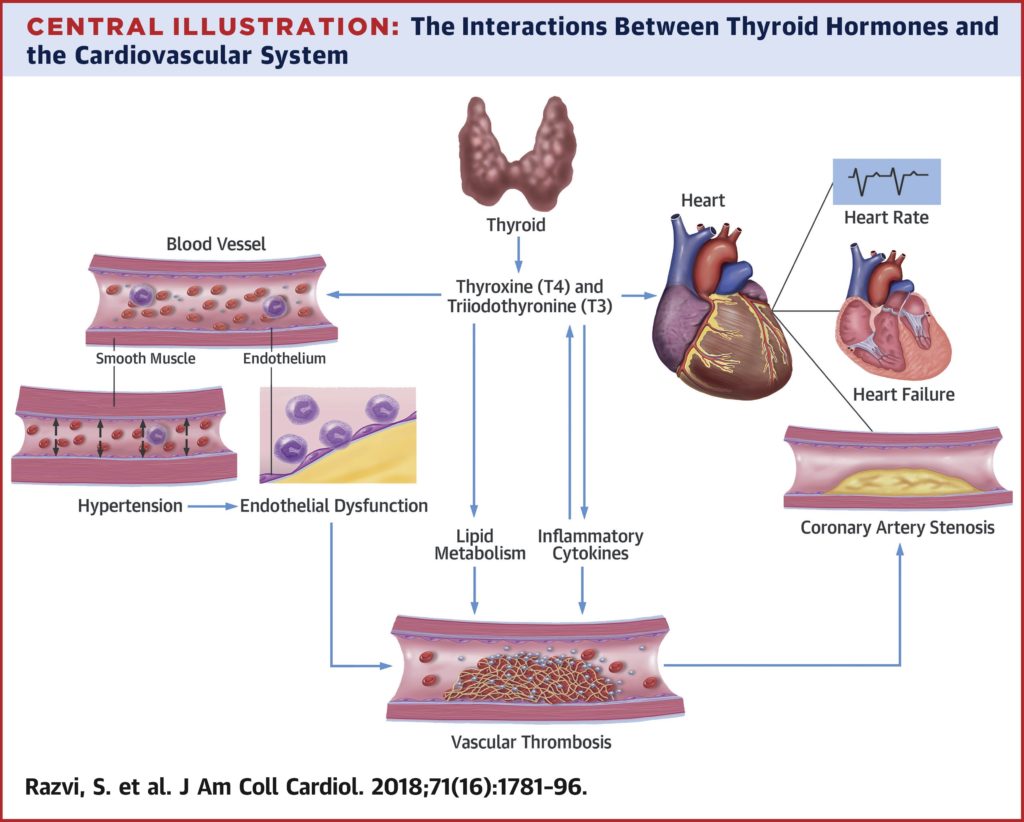
In one of the previous blogs, I wrote that Thyroid hormones have a permissive effect on the heart and blood vessels. This means that by themselves, T3 and T4 don’t have a direct effect on the heart, but their presence “permits” the actions of catecholamines such as noradrenaline & adrenaline. How does this come about? Thyroid hormones activate the cellular machinery to increase the levels of intermediate and target proteins of the catecholamines. This produces an increased response thereby “permitting” the catecholamines to act. In the absence of thyroid hormones, the levels of these intermediary and target proteins remain less, the catecholamines are unable to bring about any cellular response. As a result, in hyperthyroidism when the circulating levels of T3 and T4 are high, the heart is more prone to tachyarrhythmias and in their absence bradycardia.
3. Eyes
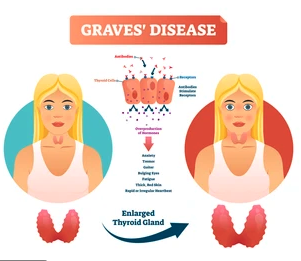
Eye signs and symptoms merit a blog of their own. More than 10 eye signs of thyroid disease have been described by various authors over the years for Grave’s disease. The main reason for the eye signs is the change in the soft tissue behind and around the globe of the eye. Eye sockets are bony cavities located in the skull. Their volume is fixed, any increase in the volume of contents of this cavity (i.e. the soft tissue) results in the protrusion of the eyeball which has been written by many authors in medicine.
4. Gastrointestinal system
The gastrointestinal system and thyroid have a complex relationship. GI malabsorption syndromes, allergies, leaky gut have been implicated as a cause for autoimmune thyroiditis. More research is needed for confirmation. The effect of thyroid hormones on gut motility is well documented. In hyperthyroidism, motility increases and hypothyroidism reduces. Malabsorption is also seen in both states.
5. Female reproductive health
Thyroid hormones regulate the function of ovaries, uterus and placenta, thereby, having an important role in the female reproductive health. Thyroid symptoms in females include menstrual irregularities, infertility or subfertility, recurrent abortions, placental irregularities and mental retardation in the child. It is for this reason that TSH is always checked along with other hormone levels when investigating these symptoms. Symptoms of hypo and hyperthyroidism are listed in the table.
6. Muscles
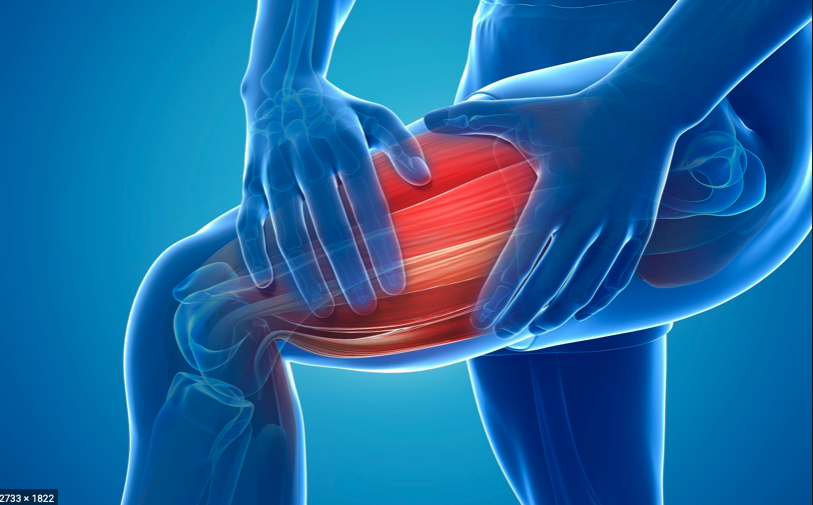
Muscles are affected in both hypothyroidism and hyperthyroidism. Muscle disease is known as myopathy. In hyperthyroidism, there will be muscle weakness and vague muscle pains with a normal creatinine level. Swallowing difficulty and pain in the muscles associated with work of breathing may be noted. Cramps in calf muscles may be seen, although rare.
In hypothyroidism, there is weakening of the core strength muscles, elevated creatinine. Cramping is much more common as compared with a hyperfunctioning gland. Generalised weakness with vague muscle aches are seen with a raised creatinine. Symptoms of myopathy in thyroid disease are vague and mild, they respond quickly to treatment. Thyroid should be evaluated when a patient presents with symptoms such as myalgias.
7. Bones and joints
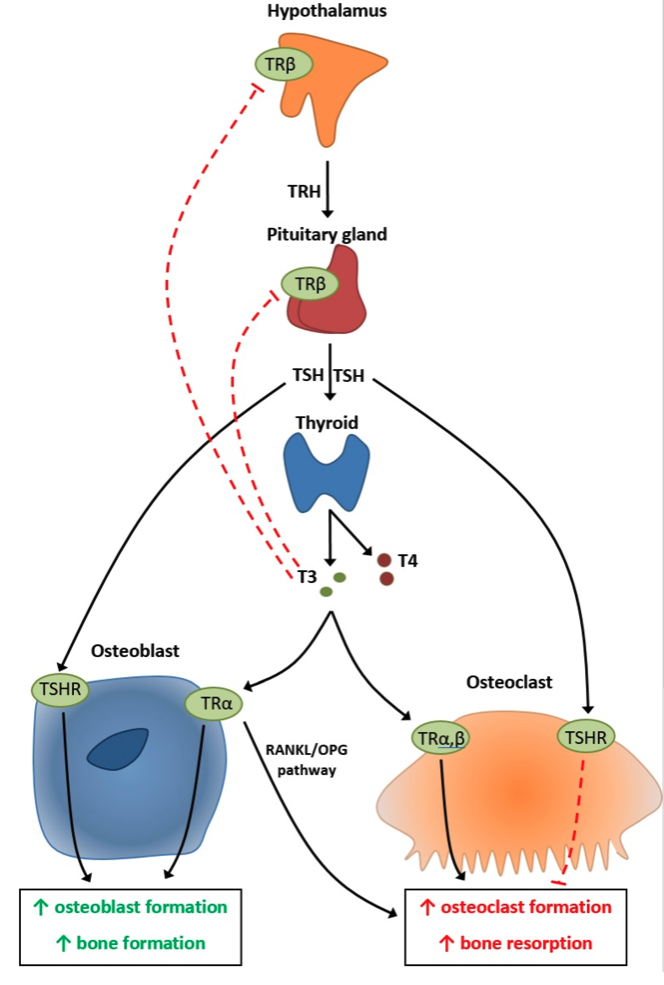
Euthyroid state (normal thyroid hormone levels) is very important for healthy bone and joints. In both hyper and hypothyroidism, bones start to weaken.
In hyperthyroidism rate of bone resorption and bone formation increases, however, the new-formed bone is not as strong as the lost bone and can fracture easily.
In hypothyroidism, bone metabolism slows down. Bone resorption slows down to as much as half of its normal level, and bone formation to lesser than that. Both the disorders lead to osteoporosis if left untreated for long.
8. Hair and skin
Both hyper and hypothyroidism cause diffuse hair loss on they scalp and in severe cases even the lateral part of the eyebrows. In hyperthyroidism the hair become coarse and brittle where as in hypothyroidism they are fine and sparse. Hair fall is noted on brushing the hair and in the shower. Hair fall is reversible after starting treatment, however, it may take a few months.
Skin in hypothyroidism is cold, dry, yellowish orange, pale, thin and wrinkly. There is visibility less sweating. Wound healing is delayed in skin ulcers.
Hyperthyroidism in early stages has flushed, soft, warm and moist, like a baby’s skin. Increased sweating is a hallmark symptom of hyperthyroidism. In Grave’s disease pruritic pre-tibial myxedema is seen, this is localized patches of thickened waxy skin in the shin area. In extreme cases, tender, red and painful nodules develop on the shin, calves and the feet.
9. Brain
Thyroxin plays an important role in the myelination of neurons and axon development. In its absence in a developing fetus and neonate, it is the most common cause of mental retardation. Lethargy, hypo-reflexia and poor motor coordination are seen in clinical hypothyroidism. In sub-clinical hypothyroidism, mood disorders such as depression and bipolar affective disorder (BAD) are seen. Elderly with hypothyroidism present with cognitive dysfunction. Extreme cases, the patient may end up in a coma.
In hyperthyroidism, tremors, anxiety, irritability and hyper-reflexia are common. Personality disorders can occur in both, and these changes in adults are usually reversible with treatment.


